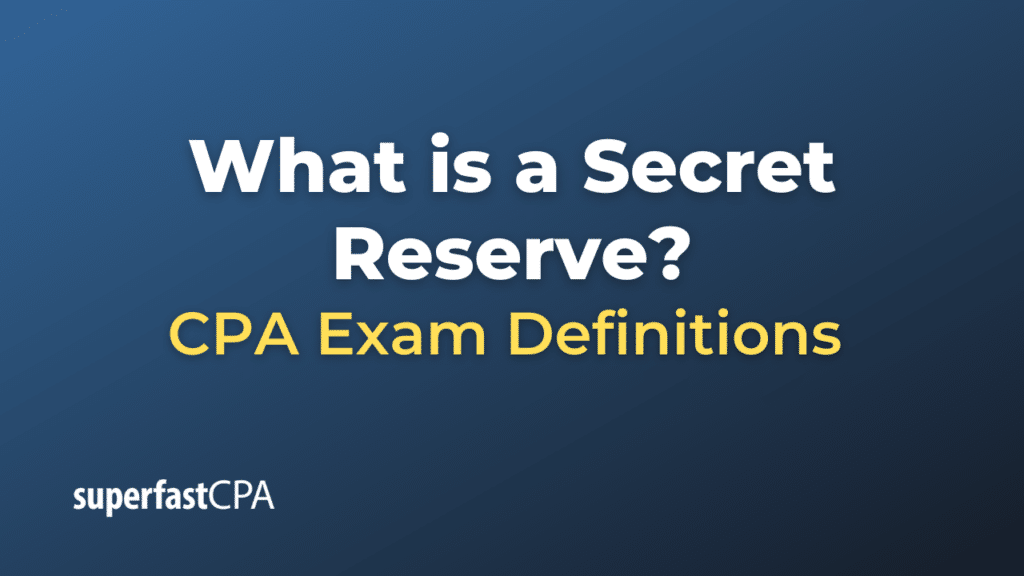Secret Reserve
A secret reserve, also known as a hidden reserve, refers to a reserve that’s not clearly disclosed or evident in a company’s financial statements. It arises when assets are intentionally undervalued or liabilities are intentionally overvalued. The result is that the financial strength of the company is understated; its actual financial position is stronger than what appears in the balance sheet.
Secret reserves provide a cushion against future losses or can be used to improve profitability in lean years. However, the creation and use of secret reserves are often viewed negatively because they can compromise the transparency and accuracy of financial reporting, which stakeholders (like investors, lenders, and analysts) rely upon to make informed decisions.
Ways a Secret Reserve Can Be Created:
- Undervaluing Assets: For instance, not revaluing assets (like land) which have appreciated in value, or writing off assets more aggressively than required.
- Overvaluing Liabilities: Over-providing for known liabilities or creating provisions for potential future liabilities.
- Understating Revenues: Not accounting for certain revenues, or unnecessarily deferring them.
- Overstating Expenses: Recording expenses higher than they actually are.
Example of a Secret Reserve
Let’s use a fictional example to illustrate how a company might create and then utilize a secret reserve.
Example: LuxuryAuto Company
Background: LuxuryAuto is a company that manufactures high-end cars. They have had consistent profits over the years and have built a strong reputation in the market. Their financial statements are closely monitored by investors, competitors, and analysts.
Creation of the Secret Reserve:
- Warranty Provision Overestimation: In Year 1, LuxuryAuto sold 10,000 cars. Based on past data, they expect 2% of these cars to come back for warranty repairs. The average cost of these repairs is usually $1,000 per car.
Normally, LuxuryAuto would create a warranty provision of: 10,000 cars x 2% x $1,000 = $200,000
However, to create a secret reserve, they decide to assume a 4% return rate instead of 2%. This doubles the warranty provision to $400,000.
The additional $200,000 is charged as an expense in the income statement, which reduces the profits for Year 1. But in reality, LuxuryAuto doesn’t expect to use that additional amount for warranty repairs.
Utilizing the Secret Reserve:
- Facing Lower Sales in Year 2: The following year, due to economic downturn, sales drop. Profits are projected to be significantly lower, which could lead to a drop in stock prices and a loss of investor confidence.
To counteract this, LuxuryAuto uses the secret reserve they created last year. The actual warranty repairs come in as expected at 2% in Year 2. This means that they only used $200,000 out of the $400,000 provisioned.
The extra $200,000 which was over-provisioned can now be reversed and added back to the profits for Year 2. This boosts the profits and paints a healthier financial picture than the reality.
Outcome: Investors and analysts see that despite the drop in sales, LuxuryAuto’s profits didn’t fall as much as expected. This could lead them to believe that LuxuryAuto managed its resources efficiently during the downturn. In reality, however, they merely adjusted the secret reserve created in the previous year.
Such practices can be misleading and can erode trust if discovered. While in some jurisdictions certain accounting choices can lead to the creation of secret reserves within legal bounds, intentionally misleading stakeholders can have legal repercussions and is considered unethical.













